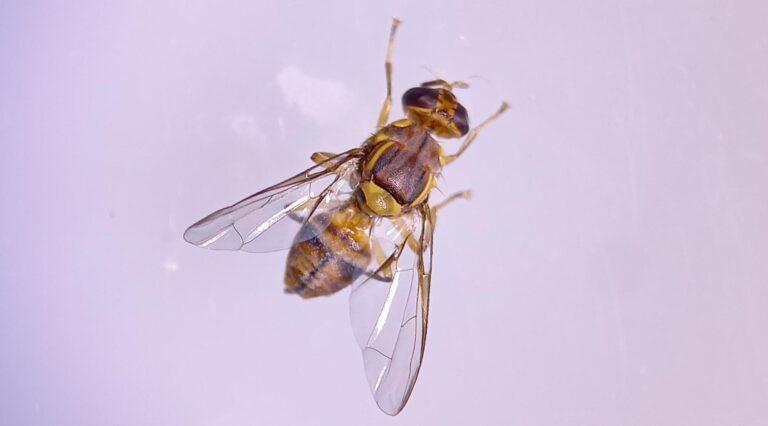The species was first detected in Italy then it has occurred in other countries like Belgium and Austria and now in France.
Bactrocera dorsalis is native to Southeast Asia where established population is maintained. This invasive pest has been expanding its reach since the 2000s, posing a substantial risk to a wide variety of fruit and vegetable crops. The fly is known for its broad host range, feeding on over 500 species of fruits and vegetables, including mangoes, tomatoes, courgettes, and avocados. It lays eggs under the skin of the produce, and the emerging larvae consume the pulp, effectively destroying the fruit from the inside. Injuries to fruit from the fly occur through oviposition punctures and larval development, making it more injurious than the Mediterranean or melon fly in affected areas.
Bactrocera dorsaliss, previously known as Dacus dorsalis and also referred to by other synonyms such as Bactrocera invadens and Bactrocera papayae, has established infestations across various regions.
A summary of the global distribution of this fly can be found here. In Asia, it is present in countries like Bangladesh, China, India, Indonesia, Japan, and Vietnam. It has spread throughout sub-Saharan Africa since its first appearance in Kenya in 2003, and the Pacific Islands, including Hawaii, have also been affected, with the pest present on all major Hawaiian Islands since the mid-1940s. In the United States, chronic detections occur in California and Florida, prompting frequent eradication programs. California has eradicated several infestations between 1960 and 2007, while Florida has seen regular detections and eradication efforts in places like Tampa and Miami-Dade County.
Significant infestations have been recorded in various regions, with damage rates of 50-80% in crops like pear, peach, and apricot in West Pakistan. It has been a principal pest of mangoes in the Philippines and a serious pest of citrus and other subtropical fruits in Japan before its eradication there.
The aforementioned examples illustrates well that the potential impact of the Oriental fruit fly on Europe’s agriculture could be devastating, with damage ranging from 20% to 100% of harvests depending on the crop. The European Union classifies Bactrocera dorsalis as a harmful pest, and it is one of few insects on the "regulated quarantine organisms" list due to its significant threat to agriculture.
Given the extensive damage caused by the Oriental fruit fly in other regions, France and other European countries where oriental fruit fly was reported must adopt stringent import controls, enhance surveillance, and implement effective pest management strategies to protect its fruit and vegetable industries from this formidable pest.
To combat the potential establishment of the Oriental fruit fly, ANSES and other countries’ authorities have issued several recommendations. These include ensuring existing rules on importing fruit and vegetables are strictly followed, increasing vigilance at entry points and in Mediterranean farming areas, using traps and insecticides to manage populations, and ensuring that individuals and businesses involved in the transport, logistics, and sale of fruit and vegetables are vigilant. Large-scale producers are advised to destroy old produce, keep produce in a plastic bag for 15 days before composting, harvest produce before it becomes over-ripe, use farming techniques to prevent produce from falling to the ground, cover plants with insect-proof nets, ensure rubbish bins are closed and emptied frequently, and install insect traps at produce loading and unloading points. For tourist it is not recommended to carry home fruit from faraway countries where this pest is well established.
In the U.S., the extensive damage potential of the Oriental fruit fly necessitates stringent control measures, with USDA-APHIS collaborating with states to implement action plans when fruit flies are detected. In Florida, the FDACS-Division of Plant Industry works alongside USDA-APHIS to regulate actions by commercial entities and homeowners to prevent the establishment and spread of this pest.
Globally, eradication programs have proven successful in regions like Japan, where an 18-year program combining insecticide-impregnated traps and the sterile insect technique led to the complete eradication of the pest.
Flies that are found by locals in France or in Austria can be reported online.

